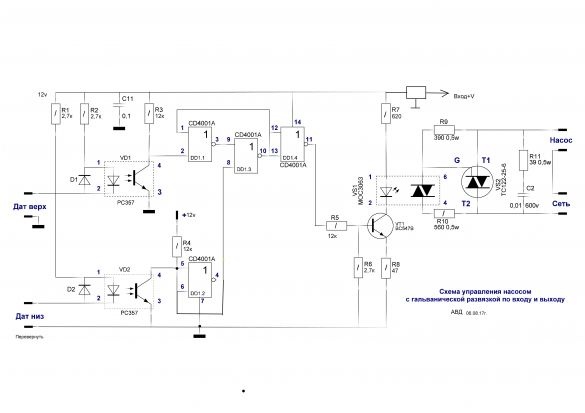Reliable. Automatically maintains the set water level. Collected and used in the country. Used purchased water level sensors.
Description of work.
If the water level is lower than both sensors, a logical unit will appear on the 11th output of the DD1.4 chip and the VS2 triac will turn on the pump. With a smooth increase in water level, even if the water contacts the lower sensor, there will still be a logical unit. As soon as the water level reaches the upper sensor at the 11th output of the DD1.4 microcircuit, a logical zero appears, the triac VS2 will turn off the pump and water will not enter the tank. When the water level drops, and the upper sensor will not come into contact with water, then there will still be a logic zero on the 11th output of the DD1.4 microcircuit and the pump will not turn on. But if the water level drops below the lower sensor, then on the 11th output of the DD1.4 chip will appear and the pump will turn on. Pump power no more than 2 kW. The triac is mounted on a radiator. The area of the radiator depends on the power of the pump.
Printed circuit boards (power and control)
The power board and triac are mounted on a radiator

